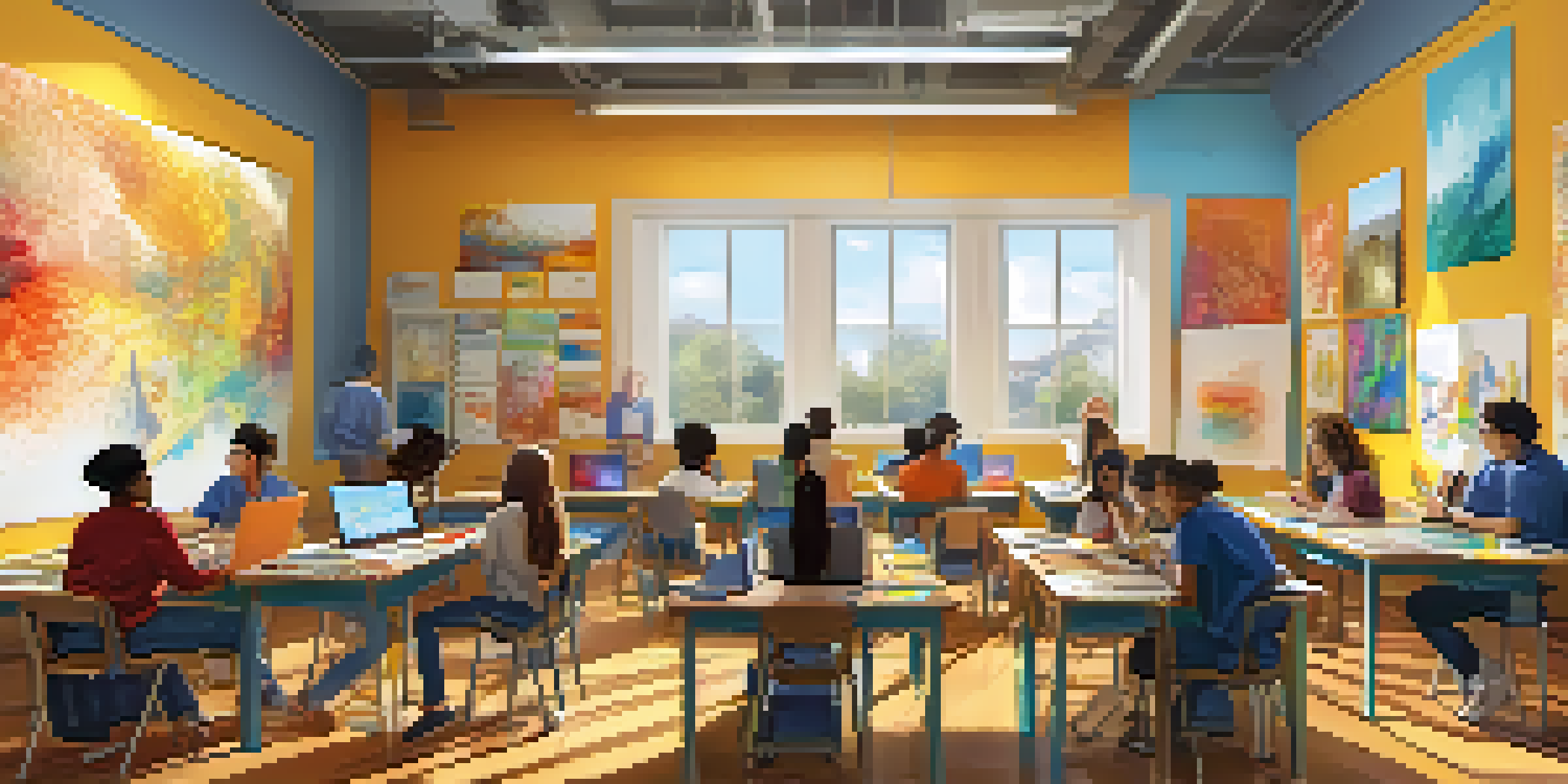Digital Art in Education: Teaching Creativity through Technology

Understanding Digital Art and Its Role in Education
Digital art combines traditional artistic practices with technology, creating a vibrant medium for self-expression. In educational settings, it allows students to engage with art in innovative ways, fostering creativity and critical thinking. As students learn to use digital tools, they also develop essential skills that are increasingly important in the modern workforce.
Benefits of Digital Art in the Classroom
Integrating digital art into the classroom offers numerous advantages, such as enhancing engagement and motivation. Students often find digital tools more appealing than traditional methods, which can lead to increased participation in art projects. Furthermore, these tools provide instant feedback, allowing students to refine their skills and explore their creativity more freely.
Digital Art Enhances Learning
Integrating digital art in education boosts engagement and fosters creativity among students.
Encouraging Collaboration through Digital Platforms
Digital art encourages collaboration among students, as they can easily share and critique each other's work online. Platforms like Google Classroom or various art-specific forums create an interactive environment where students can learn from one another. This collaborative spirit not only enhances their artistic skills but also builds essential communication and teamwork abilities.
Integrating Digital Art with Other Subjects
Digital art can be seamlessly integrated into various subjects, making learning more interdisciplinary. For instance, students can create digital infographics for science projects or use graphic design in history presentations. This cross-curricular approach not only enriches their understanding of the subject matter but also demonstrates the relevance of art in everyday life.
Collaboration Through Digital Tools
Digital platforms enable students to share and critique each other's work, enhancing teamwork and communication skills.
Tools and Technologies for Digital Art Education
There are a plethora of tools available for teaching digital art, ranging from software like Adobe Creative Cloud to free apps like Canva. These platforms allow students to experiment with different styles and techniques, empowering them to create unique pieces. Educators can tailor their tool choices based on students' skill levels, ensuring everyone has the opportunity to succeed.
Fostering Individual Expression Through Digital Art
One of the most powerful aspects of digital art is its ability to foster individual expression. Students can experiment with their ideas and emotions without the constraints often found in traditional art forms. This freedom not only boosts their confidence but also encourages them to develop a personal artistic voice.
Future of Digital Art is Bright
Emerging technologies like virtual and augmented reality promise to transform how students interact with art in educational settings.
Challenges and Solutions in Digital Art Education
While digital art offers many benefits, it also comes with challenges, such as varying levels of access to technology. Educators can address this by implementing blended learning strategies, where students can work both online and offline. Additionally, providing professional development for teachers ensures they feel comfortable using digital tools in their lesson plans.
The Future of Digital Art in Education
As technology continues to evolve, the future of digital art in education looks promising. Emerging technologies like virtual reality and augmented reality are set to revolutionize how students engage with art. By staying adaptable and open to new tools, educators can continue to inspire creativity and innovation in their classrooms.